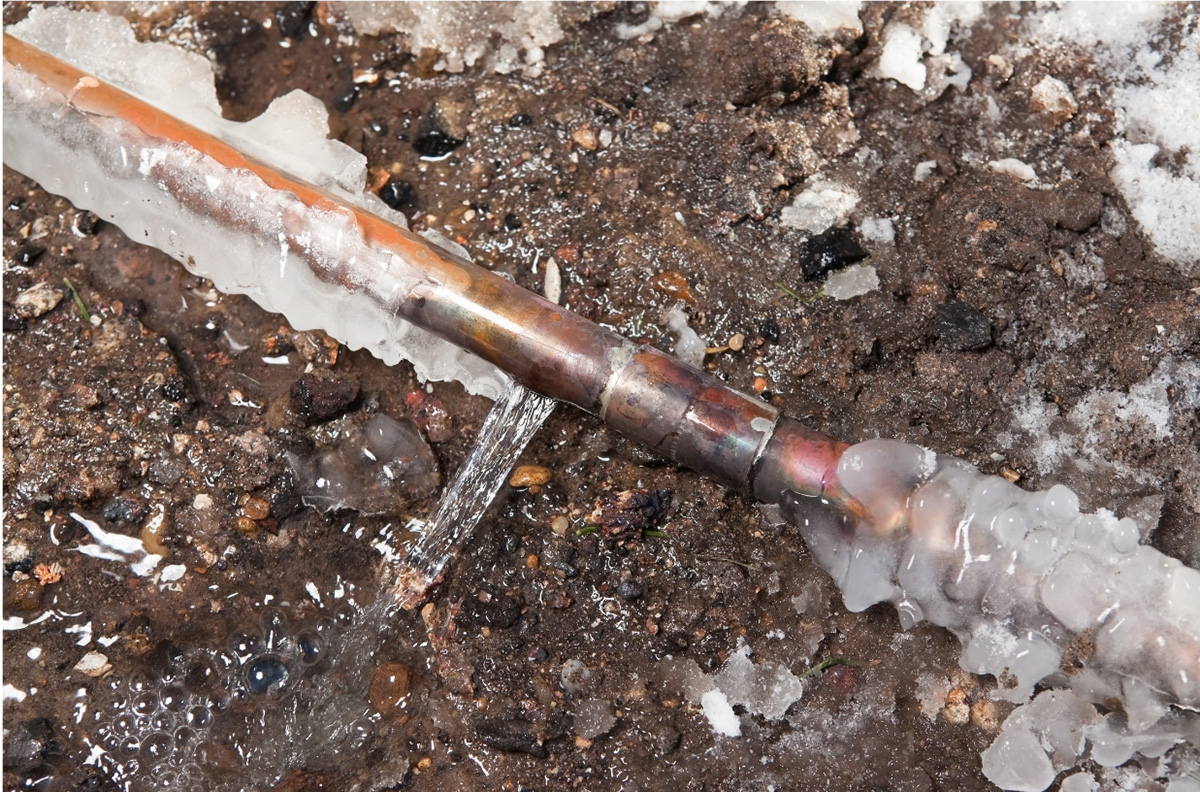Ways to Avoid Frozen Plumbing in Winter: Expert Advice
Ways to Avoid Frozen Plumbing in Winter: Expert Advice
Blog Article
We have stumbled upon this article involving How To Avoid Freezing Pipes down the page on the web and think it made good sense to talk about it with you over here.

Winter can wreak havoc on your pipes, particularly by freezing pipes. Right here's just how to prevent it from happening and what to do if it does.
Intro
As temperature levels decrease, the danger of frozen pipes boosts, possibly causing pricey repair work and water damage. Recognizing just how to prevent frozen pipelines is important for homeowners in cool climates.
Avoidance Tips
Insulating susceptible pipes
Wrap pipelines in insulation sleeves or make use of warmth tape to shield them from freezing temperatures. Concentrate on pipes in unheated or external locations of the home.
Home heating strategies
Keep indoor spaces sufficiently heated up, specifically areas with pipes. Open closet doors to allow cozy air to distribute around pipelines under sinks.
Just how to determine frozen pipelines
Try to find lowered water flow from taps, unusual smells or sounds from pipes, and noticeable frost on revealed pipes.
Long-Term Solutions
Structural changes
Take into consideration rerouting pipes away from exterior wall surfaces or unheated areas. Add additional insulation to attics, cellars, and crawl spaces.
Upgrading insulation
Purchase high-grade insulation for pipelines, attic rooms, and wall surfaces. Correct insulation aids preserve regular temperatures and lowers the threat of icy pipelines.
Safeguarding Outdoor Pipes
Yard pipes and outside taps
Separate and drain garden hoses before winter. Set up frost-proof spigots or cover outdoor taps with insulated caps.
Recognizing Icy Pipelines
What creates pipelines to freeze?
Pipelines freeze when revealed to temperatures below 32 ° F (0 ° C) for extended durations. As water inside the pipes ices up, it expands, taxing the pipe walls and potentially creating them to rupture.
Risks and problems
Frozen pipes can cause water system disturbances, property damage, and pricey repairs. Burst pipelines can flood homes and trigger extensive architectural damages.
Indications of Frozen Piping
Identifying frozen pipelines early can avoid them from rupturing.
What to Do If Your Pipelines Freeze
Immediate activities to take
If you believe frozen pipelines, keep faucets available to ease pressure as the ice thaws. Make use of a hairdryer or towels soaked in warm water to thaw pipes gradually.
Conclusion
Protecting against frozen pipes requires aggressive measures and fast reactions. By understanding the reasons, signs, and preventive measures, property owners can secure their pipes during cold weather.
5 Ways to Prevent Frozen Pipes
Drain Outdoor Faucets and Disconnect Hoses
First, close the shut-off valve that controls the flow of water in the pipe to your outdoor faucet. Then, head outside to disconnect and drain your hose and open the outdoor faucet to allow the water to completely drain out of the line. Turn off the faucet when done. Finally, head back to the shut-off valve and drain the remaining water inside the pipe into a bucket or container. Additionally, if you have a home irrigation system, you should consider hiring an expert to clear the system of water each year.
Insulate Pipes
One of the best and most cost-effective methods for preventing frozen water pipes is to wrap your pipes with insulation. This is especially important for areas in your home that aren’t exposed to heat, such as an attic. We suggest using foam sleeves, which can typically be found at your local hardware store.
Keep Heat Running at 65
Your pipes are located inside your walls, and the temperature there is much colder than the rest of the house. To prevent your pipes from freezing, The Insurance Information Institute suggests that you keep your home heated to at least 65 degrees, even when traveling. You may want to invest in smart devices that can keep an eye on the temperature in your home while you’re away.
Leave Water Dripping
Moving water — even a small trickle — can prevent ice from forming inside your pipes. When freezing temps are imminent, start a drip of water from all faucets that serve exposed pipes. Leaving a few faucets running will also help relieve pressure inside the pipes and help prevent a rupture if the water inside freezes.
Open Cupboard Doors
Warm your kitchen and bathroom pipes by opening cupboards and vanities. You should also leave your interior doors ajar to help warm air circulate evenly throughout your home.

Do you enjoy more info about 6 Ways to Prevent Frozen Pipes? Try leaving feedback down the page. We would be happy to hear your insights about this article. In hopes to see you back again in the future. If you enjoyed reading our blog entry please consider to share it. Many thanks for your time spent reading it.
Go Deal Report this page